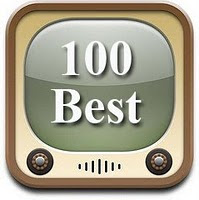A rubric is a tool used to evaluate student work. The rubric presents a list of the criteria that are considered important. Each of these criteria are accompanied by descriptions of different levels of success in demonstrating proficiency in each of the areas.
Here is an introductory video that uses chocolate chip cookies to explain the basics of using a rubric for evaluation.
Rubrics serve multiple roles. While people usually consider rubrics as evaluation tools, their most important task is to inform the learner of what is expected. Each cell tells you what is expected for each criteria. Learners can use this tool to evaluate their work before submitting it.
Here is a video that is a bit more technical than the cookie video. It appears to have been created by a college student, but it is complete. The only problem with the presentation is that they place the "unacceptable" column in the left column.
It is generally accepted that it is easier for learners to place the "exceptional" column in the left column so that it will be directly next to the criteria name.
You can easily create a rubric using a table in Word or Google Docs, but you can also create a rubric using RubiStar (rubistar.4teachers.org) The advantage to using RubiStar is that there are many samples of rubrics that you can modify to fit your needs.
Here is an introductory video that uses chocolate chip cookies to explain the basics of using a rubric for evaluation.
Rubrics serve multiple roles. While people usually consider rubrics as evaluation tools, their most important task is to inform the learner of what is expected. Each cell tells you what is expected for each criteria. Learners can use this tool to evaluate their work before submitting it.
Here is a video that is a bit more technical than the cookie video. It appears to have been created by a college student, but it is complete. The only problem with the presentation is that they place the "unacceptable" column in the left column.
It is generally accepted that it is easier for learners to place the "exceptional" column in the left column so that it will be directly next to the criteria name.
You can easily create a rubric using a table in Word or Google Docs, but you can also create a rubric using RubiStar (rubistar.4teachers.org) The advantage to using RubiStar is that there are many samples of rubrics that you can modify to fit your needs.
Do you use rubrics? What tips do you have building more effective tools?
Z








